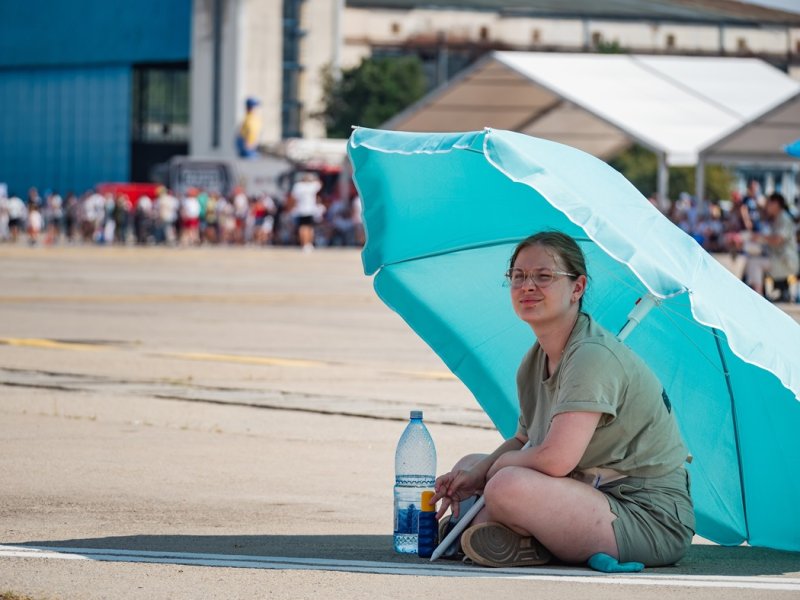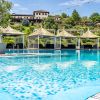When the city melts: how Bucharest copes with extreme heat

By Bucharest Team
- Articles
In the middle of summer, Bucharest isn't just hot. It's hostile. Sidewalks turn into radiating surfaces, trees—where they still exist—can’t keep up with the heat trapped between buildings, and the city breathes in short, heavy waves of warm air that no longer dissipate by night. Heatwaves are no longer outliers; they’ve become a predictable urban pattern. The real question now is: where do you take shelter when the temperature climbs past 37°C and you still have ten hours left to spend in the city?
The answer doesn't come from public authorities. It’s shaped informally, through improvised routines and personal strategies. Bucharest residents invent their own cool zones.
Shopping malls have become the most accessible escape. You don’t have to buy anything. You can sit on a bench in the food court for an hour with a bottle of water and steady air conditioning. There are outlets, free restrooms, Wi-Fi, and—perhaps most importantly—no pressure to leave. From AFI to Băneasa, people don’t just come to shop anymore—they come to survive midday. Some work on laptops. Others simply rest. Couriers, retirees, parents with young kids—all come for the same reason: not to feel sick from the heat.
For those looking for quiet, not just cold air, libraries and museums offer calmer, more focused alternatives—but with some barriers. The National Library has cool reading rooms and desks with internet access, but it’s not exactly a drop-in refuge. There are opening hours and minor bureaucracies to navigate. Museums—Antipa, MNAR, the Museum of the Romanian Peasant—are more flexible, offering both shelter and calm, as long as you’re willing to pay for entry and blend into the curated environment.
Parks should, in theory, be the first line of defense. But in practice, few offer real shade during peak hours. Herăstrău is full of uncovered walkways and the lake does little to cool the air. Carol Park and the Botanical Garden are better options, but only become bearable after 7 p.m. Until then: empty benches, sun-drenched alleys, and a handful of people who know exactly which corners of the park avoid direct sun at 2 p.m.
Meanwhile, those who can afford to escape the city for a few hours take a different route altogether. Wellness centers like Therme, on the outskirts of Bucharest, attract thousands on weekends with the promise of water, vegetation, and a controlled climate. Indoor pools, palm trees, shaded hammocks. It’s a private solution to a public problem—and it works, as long as you're willing (and able) to pay for it. The same goes for hotel pools, urban rooftop bars, and leisure gardens popping up across Ilfov and the outer districts. They're not accessible to everyone, but they show a shift in behavior: when the city gets unbearable, people leave it behind—even temporarily.
There’s one more space people turn to—often unnoticed: churches. In many neighborhoods, the coolest air is behind the thick walls of a quiet parish. You enter without being asked anything, and you stay as long as you need. It’s not officially a shelter, but it works. Someone sits on a pew in silence. Not praying. Just cooling down.
The deeper problem is structural: Bucharest is not designed for this kind of climate. There are no designated cooling centers, no public drinking fountains, no buildings opened during red-alert days. The city’s social services offer minimal assistance and are poorly publicized. If you feel faint from the heat on the street, there’s no clear place to go. And no one to direct you.
So the city defends itself in fragments. A shady bench, an hour in a mall, a moment of stillness inside a church. Everyone builds their own route, based on what they know, where they work, or how quickly they can reach air-conditioned safety. It’s not a strategy. It’s survival.
Until the city learns to breathe differently, cooling off in Bucharest remains a matter of improvisation. Comfort, here, is not a right—it’s a daily negotiation.
Also recommended Bucharest in Summer. What remains in a city that forgets to rush
Also recommended Bucharest during Summer times - Why to visit the capital during the summer season






























